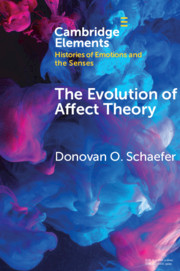Element contents
The Evolution of Affect Theory
Published online by Cambridge University Press: 22 May 2019
Summary
- Type
- Element
- Information
- Online ISBN: 9781108765343Publisher: Cambridge University PressPrint publication: 30 May 2019
Bibliography
- 69
- Cited by



